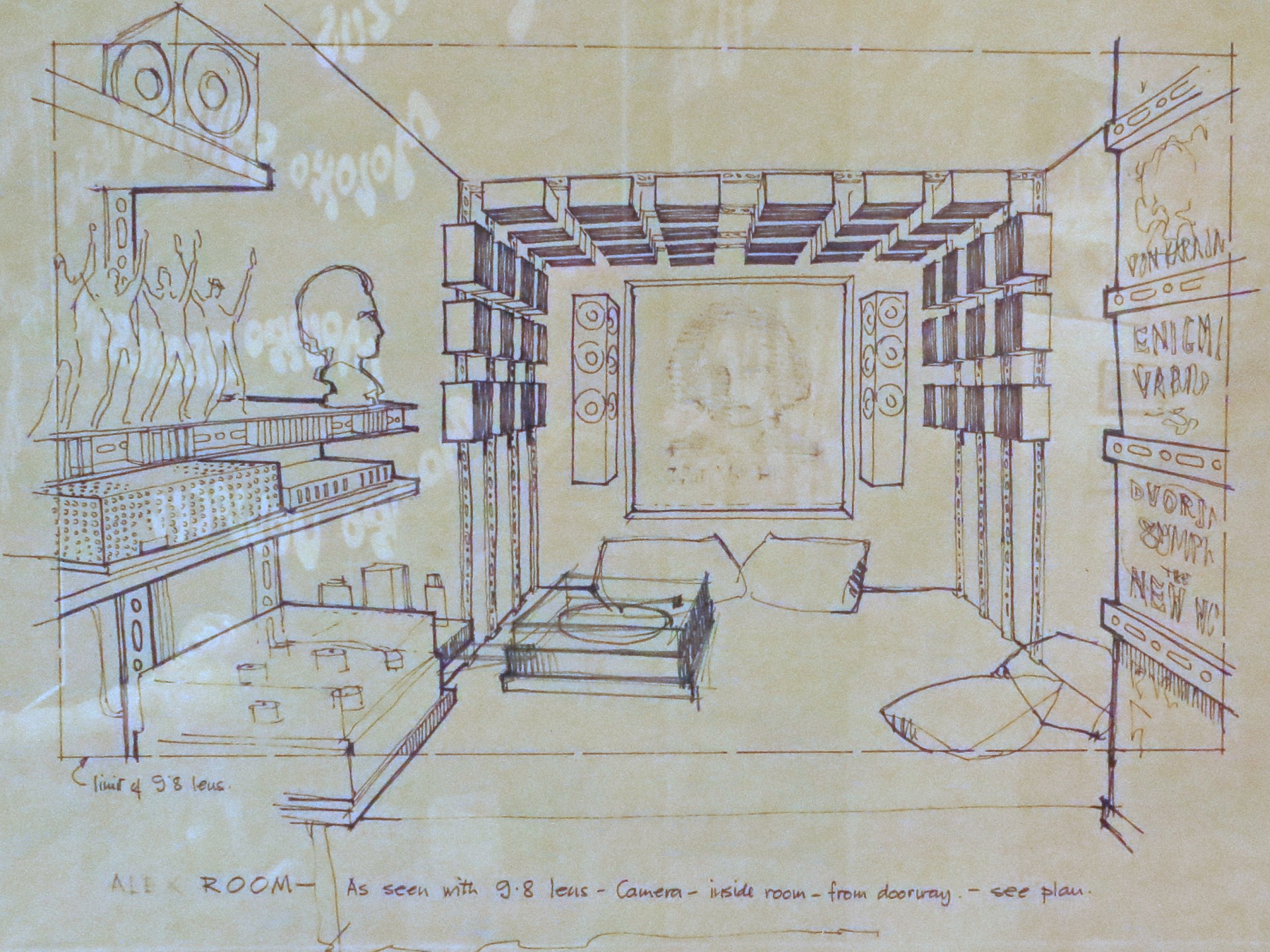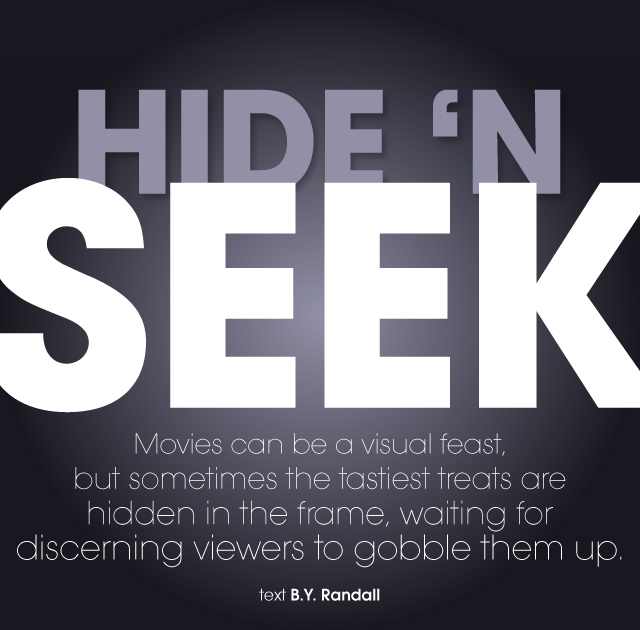 Every film is an illusion, a brilliant phantasmagoria of sights flickering across a screen at twenty-four frames a second (forty-eight, if you’re Peter Jackson and want to annoy us). Most directors are content to dazzle us with visuals, but on occasion, some of their most interesting imagery is buried deep within the frame. Like, way deep. Welcome to the world of “Blink and you’ll miss it,” those wonderful but fleeting moments where close attention reaps great rewards.
Every film is an illusion, a brilliant phantasmagoria of sights flickering across a screen at twenty-four frames a second (forty-eight, if you’re Peter Jackson and want to annoy us). Most directors are content to dazzle us with visuals, but on occasion, some of their most interesting imagery is buried deep within the frame. Like, way deep. Welcome to the world of “Blink and you’ll miss it,” those wonderful but fleeting moments where close attention reaps great rewards.
Throughout history, filmmakers have been populating their films with sly in-jokes, subtle (or not so subtle) references that comment on the action or, in the case of some, subliminal visuals that are the reason pause buttons were invented. The trick is finding them. With that quest in mind, we don our deerstalker hat, poise our magnifying glass and go in search of some of the most invigorating examples of what to look for, even when the movie might suck.
 Back in the last century, when Jim Carrey was still making funny movies, his breakthrough came in this guilty pleasure in which the answer to a key plot twist is planted right in front of you. Either that, or it’s Freud meets Mel Brooks. When Ace goes to tell the police lieutenant that he’s solved the murder case, a careful scan of the desk reveals a banana placed between two apples. It’s in there for a reason (beyond the obvious cheap laugh), and when the final reveal is done, it all makes sense. Alrighty then, paging Captain Winky!
Back in the last century, when Jim Carrey was still making funny movies, his breakthrough came in this guilty pleasure in which the answer to a key plot twist is planted right in front of you. Either that, or it’s Freud meets Mel Brooks. When Ace goes to tell the police lieutenant that he’s solved the murder case, a careful scan of the desk reveals a banana placed between two apples. It’s in there for a reason (beyond the obvious cheap laugh), and when the final reveal is done, it all makes sense. Alrighty then, paging Captain Winky!
 Forget that Cameron Crowe’s definitive work is laden with enough references to fill up the Rock and Roll Hall of Fame (the Allman Brothers winks alone are myriad), the coolest one flashes by in seconds, but it should send Pink Floyd fans into spasms of delight. As Kate Hudson drives Patrick Fugit to party with Billy Crudup’s band, Sweetwater, at the Hyatt House, the cover of Dark Side of the Moon reflectively rolls over the windshield, much to Fugit’s wide-eyed wonder. It’s enough to make a Floyd fanatic giddily grab a bong and sync up The Wizard of Oz one more time.
Forget that Cameron Crowe’s definitive work is laden with enough references to fill up the Rock and Roll Hall of Fame (the Allman Brothers winks alone are myriad), the coolest one flashes by in seconds, but it should send Pink Floyd fans into spasms of delight. As Kate Hudson drives Patrick Fugit to party with Billy Crudup’s band, Sweetwater, at the Hyatt House, the cover of Dark Side of the Moon reflectively rolls over the windshield, much to Fugit’s wide-eyed wonder. It’s enough to make a Floyd fanatic giddily grab a bong and sync up The Wizard of Oz one more time.
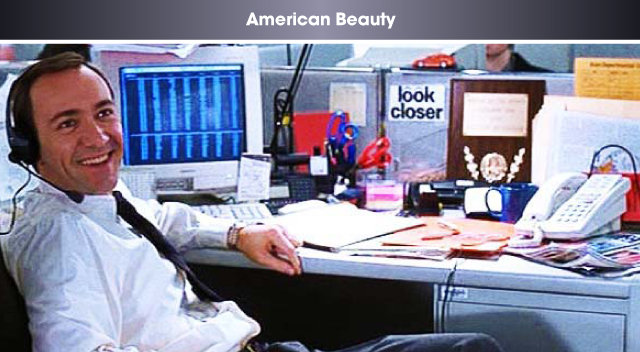 This Best Picture winner has been hailed for its superb performances, razor-sharp screenplay and compelling direction by Sam Mendes, but betcha didn’t know that it also contains an amusing reference to a previous Oscar-winning film that also starred Kevin Spacey. In Beauty, Spacey plays harried ad exec Lester Burnham, who suffers middle-age ennui both at home and at his job. But as the tagline on the film’s one-sheet admonished, “Look closer.” What’s that hanging in Lester’s cubicle? A small poster for The Usual Suspects, Spacey’s first Oscar winner. Look closer, indeed.
This Best Picture winner has been hailed for its superb performances, razor-sharp screenplay and compelling direction by Sam Mendes, but betcha didn’t know that it also contains an amusing reference to a previous Oscar-winning film that also starred Kevin Spacey. In Beauty, Spacey plays harried ad exec Lester Burnham, who suffers middle-age ennui both at home and at his job. But as the tagline on the film’s one-sheet admonished, “Look closer.” What’s that hanging in Lester’s cubicle? A small poster for The Usual Suspects, Spacey’s first Oscar winner. Look closer, indeed.
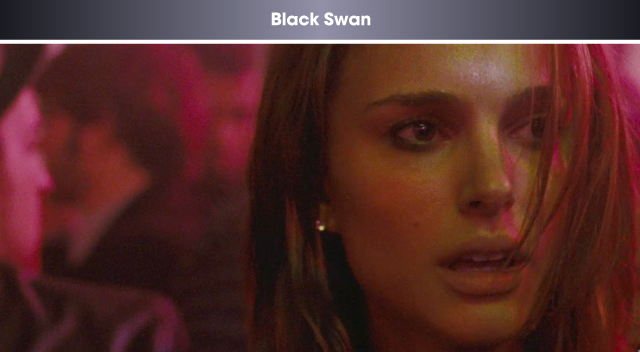 Director Darren Aronofsky was so obsessed with detail in creating this neo-classic, that it practically cries out to be watched frame by frame. It’s a cornucopia of subliminal imagery, with numerous scenes in which faces morph into others and characters appear in flashes in the background, not to mention the numerous swans, both stuffed and ceramic, that pop up from time to time. In one sequence of the nightclub scene, it was reported that Aronofsky used 1,000 layered images alone in a forty-five-second span. A film to be treasured and examined with a fine-tooth comb.
Director Darren Aronofsky was so obsessed with detail in creating this neo-classic, that it practically cries out to be watched frame by frame. It’s a cornucopia of subliminal imagery, with numerous scenes in which faces morph into others and characters appear in flashes in the background, not to mention the numerous swans, both stuffed and ceramic, that pop up from time to time. In one sequence of the nightclub scene, it was reported that Aronofsky used 1,000 layered images alone in a forty-five-second span. A film to be treasured and examined with a fine-tooth comb.
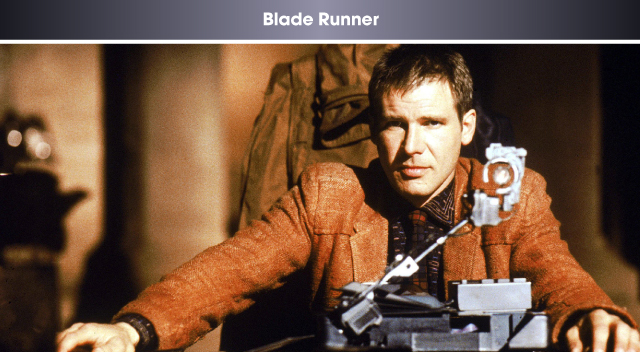 There are many amazing things about Ridley Scott’s landmark science-fiction film, one of which is that supposedly only ninety special effects shots were used for the entire film, a trinket of trivia that should shame today’s CGI orgies. Where things get really interesting, though, is the scene where Harrison Ford goes to visit the Cambodian woman to find out about a single fish scale he has, only to be told it’s a snake scale instead. Sure, that turns out to be an important bit of info, but the amusing part is that in reality, the image that flashes by under the electron microscope was neither animal. It’s actually an extreme close-up of a marijuana bud, but wizened weed worshipers would’ve picked that out in a minute, right? Smoke ’em if you got ’em!
There are many amazing things about Ridley Scott’s landmark science-fiction film, one of which is that supposedly only ninety special effects shots were used for the entire film, a trinket of trivia that should shame today’s CGI orgies. Where things get really interesting, though, is the scene where Harrison Ford goes to visit the Cambodian woman to find out about a single fish scale he has, only to be told it’s a snake scale instead. Sure, that turns out to be an important bit of info, but the amusing part is that in reality, the image that flashes by under the electron microscope was neither animal. It’s actually an extreme close-up of a marijuana bud, but wizened weed worshipers would’ve picked that out in a minute, right? Smoke ’em if you got ’em!
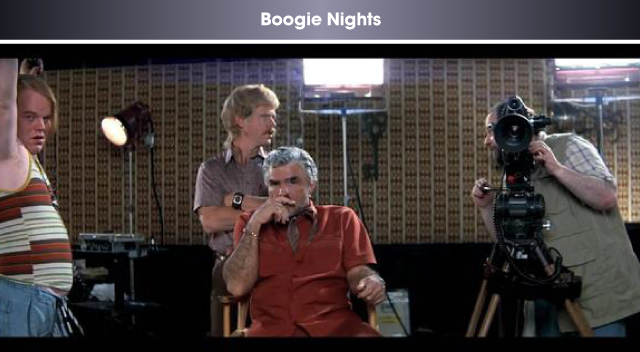 After the failure of Hard Eight, Paul Tomas Anderson struck gold with his sophomore effort, this paean to porn. The film starred Mark Wahlberg, Burt Reynolds, Julianne Moore and…Elliott Gould? One might be led to think so after the star of the original M*A*S*H pops up three times in the film. Not in person, mind you, but as a photo on a wall in a still from his 1970 film Getting Straight. Anderson has never made any secret about his adoration of all things Altman, and Gould was an Altman staple in his early-to-mid-’70s films, like California Split and The Long Goodbye. Special audio bonus points for naming the song that Rollergirl is listening to in her last scene, and how it ties in to one of the principals involved with the music of the film and, later, Anderson’s Magnolia.
After the failure of Hard Eight, Paul Tomas Anderson struck gold with his sophomore effort, this paean to porn. The film starred Mark Wahlberg, Burt Reynolds, Julianne Moore and…Elliott Gould? One might be led to think so after the star of the original M*A*S*H pops up three times in the film. Not in person, mind you, but as a photo on a wall in a still from his 1970 film Getting Straight. Anderson has never made any secret about his adoration of all things Altman, and Gould was an Altman staple in his early-to-mid-’70s films, like California Split and The Long Goodbye. Special audio bonus points for naming the song that Rollergirl is listening to in her last scene, and how it ties in to one of the principals involved with the music of the film and, later, Anderson’s Magnolia.
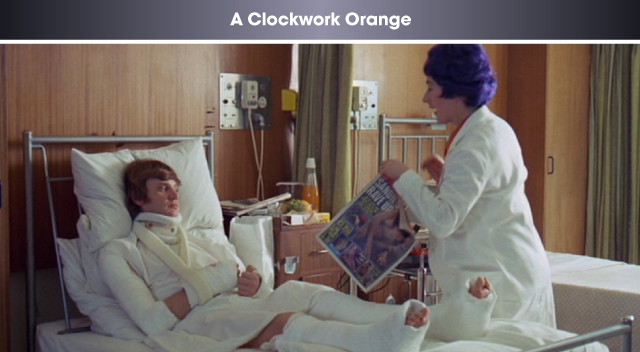 Stanley Kubrick was a master of minutiae, but who would’ve figured something in one of his most famous films would have such a long run? In his 1964 black-comedy classic Dr. Strangelove, the CRM 114 Discriminator was a piece of radio equipment that, if it had not been destroyed, could’ve prevented the bombs from falling. Oops. The code got a redress in his dystopian A Clockwork Orange, with the name now changed to Serum 114 in a brief shot of the medicinal bottle before the fluid is drawn and injected into Malcolm McDowell’s butt, all in the name of therapy. The name would also later make appearances in films such as Back to the Future, Men in Black III and Severance, as well as TV shows like Heroes and Deep Space Nine. A legacy lives on.
Stanley Kubrick was a master of minutiae, but who would’ve figured something in one of his most famous films would have such a long run? In his 1964 black-comedy classic Dr. Strangelove, the CRM 114 Discriminator was a piece of radio equipment that, if it had not been destroyed, could’ve prevented the bombs from falling. Oops. The code got a redress in his dystopian A Clockwork Orange, with the name now changed to Serum 114 in a brief shot of the medicinal bottle before the fluid is drawn and injected into Malcolm McDowell’s butt, all in the name of therapy. The name would also later make appearances in films such as Back to the Future, Men in Black III and Severance, as well as TV shows like Heroes and Deep Space Nine. A legacy lives on.
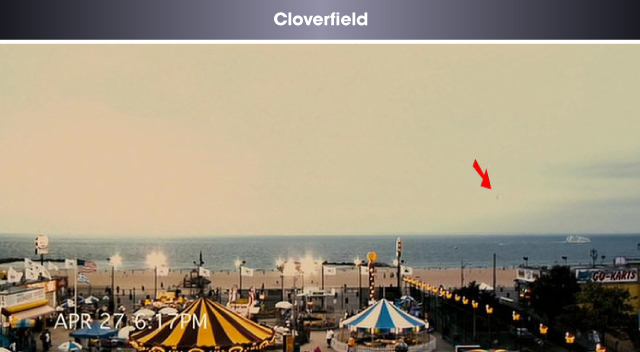 According to the basics of contemporary screenwriting, the inciting event should always be introduced within the first fifteen minutes. This J.J. Abrams-produced monster movie turns that rule on its head, with the main instigator revealed in the last seconds of the film. It’s the precipitant for the entire rest of the story, but it’s so quick, and you need such a keen eye, that many have missed it. In a flashback, as the two protagonists are riding in a Ferris wheel, if you look closely in the background, you can see something splash down in the water off the coast. That something turns out to be a fallen satellite, which winds up unearthing the dormant monster, which in turn leads to all hell breaking loose in the Big Apple.
According to the basics of contemporary screenwriting, the inciting event should always be introduced within the first fifteen minutes. This J.J. Abrams-produced monster movie turns that rule on its head, with the main instigator revealed in the last seconds of the film. It’s the precipitant for the entire rest of the story, but it’s so quick, and you need such a keen eye, that many have missed it. In a flashback, as the two protagonists are riding in a Ferris wheel, if you look closely in the background, you can see something splash down in the water off the coast. That something turns out to be a fallen satellite, which winds up unearthing the dormant monster, which in turn leads to all hell breaking loose in the Big Apple.
 Before Nicolas Winding Refn was taken out behind the critic’s woodshed for Only God Forgives, he was the cognoscenti’s darling for this brooding, hyper-violent story in which Ryan Gosling plays a getaway driver who doesn’t say a whole heck of a lot. He does, however, sport a cool jacket with a large scorpion embroidered on the back of it, an image Refn loved so much that he embedded it in three other scenes. The best comes about forty minutes into the film, when, in a shot of Gosling driving, an outline of a scorpion is seen reflected in his window before it quickly fades. It’s an effectively eerie little touch that underscores the film’s theme (based around a fable), although most scorpions do talk more than Gosling did in the movie.
Before Nicolas Winding Refn was taken out behind the critic’s woodshed for Only God Forgives, he was the cognoscenti’s darling for this brooding, hyper-violent story in which Ryan Gosling plays a getaway driver who doesn’t say a whole heck of a lot. He does, however, sport a cool jacket with a large scorpion embroidered on the back of it, an image Refn loved so much that he embedded it in three other scenes. The best comes about forty minutes into the film, when, in a shot of Gosling driving, an outline of a scorpion is seen reflected in his window before it quickly fades. It’s an effectively eerie little touch that underscores the film’s theme (based around a fable), although most scorpions do talk more than Gosling did in the movie.
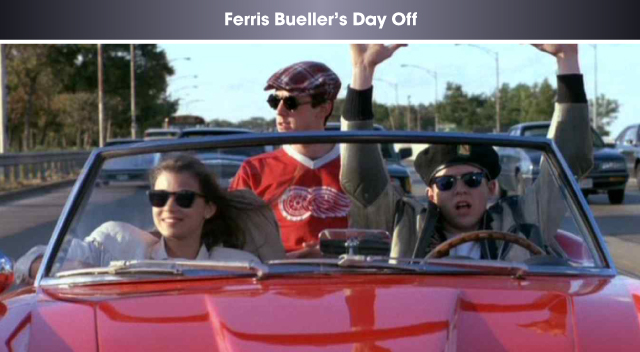 Matthew Broderick said it best in his existential motto as the titular school-skipper in this John Hughes ’80s megahit: “If you don’t stop and look around once in a while, you could miss it.” And the “it” you could be missing are all the cross-references to other films Hughes either wrote, produced or directed, including The Breakfast Club, Mr. Mom, National Lampoon’s Vacation and, yes, even FBDO. And where are all these allusions? Why, in abbreviated form on some of the license-plate frames on the cars that various characters drive in the movie. Danke Schoen, now you feel almost as smart as Ferris.
Matthew Broderick said it best in his existential motto as the titular school-skipper in this John Hughes ’80s megahit: “If you don’t stop and look around once in a while, you could miss it.” And the “it” you could be missing are all the cross-references to other films Hughes either wrote, produced or directed, including The Breakfast Club, Mr. Mom, National Lampoon’s Vacation and, yes, even FBDO. And where are all these allusions? Why, in abbreviated form on some of the license-plate frames on the cars that various characters drive in the movie. Danke Schoen, now you feel almost as smart as Ferris.
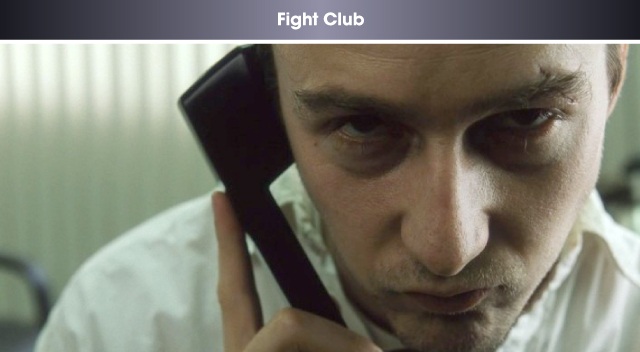 Forget blink and you’ll miss it. Even if you had your eyes propped open like Alex in A Clockwork Orange, it’s doubtful you’d catch every fleeting flicker of frame that David Fincher packs with subliminal imagery and plot reveals. It starts right after the FBI piracy warning at the beginning and doesn’t let up for over two hours — an all-out assault that includes Tyler Durden snippet appearances à la Where’s Waldo?, film references and even a single-frame insertion of male genitalia. But tops for all the teasing comes when, after Norton’s condo at the Pearson Towers blows up, he gets a phone call from Tyler. If you had looked closely at what the phone said, you wouldn’t have been so surprised at the big reveal later on. Like our parents and teachers always told us, pay attention!
Forget blink and you’ll miss it. Even if you had your eyes propped open like Alex in A Clockwork Orange, it’s doubtful you’d catch every fleeting flicker of frame that David Fincher packs with subliminal imagery and plot reveals. It starts right after the FBI piracy warning at the beginning and doesn’t let up for over two hours — an all-out assault that includes Tyler Durden snippet appearances à la Where’s Waldo?, film references and even a single-frame insertion of male genitalia. But tops for all the teasing comes when, after Norton’s condo at the Pearson Towers blows up, he gets a phone call from Tyler. If you had looked closely at what the phone said, you wouldn’t have been so surprised at the big reveal later on. Like our parents and teachers always told us, pay attention!
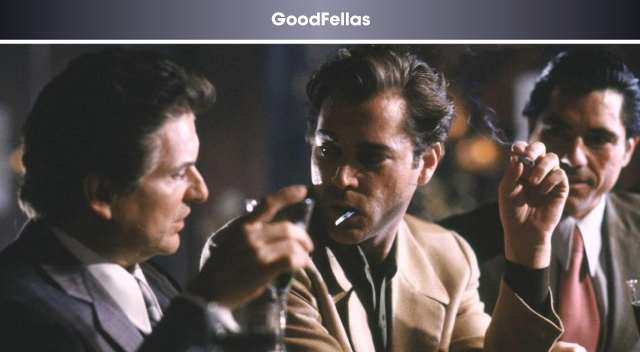 It’s only natural that one of our greatest directors and film aficionados would pack his own pictures with numerous tweaks and nods to satisfy cineastes everywhere. This mob masterpiece yielded a couple of choice nuggets, including a brief view of the Youngstown Vindicator, the paper Ray Liotta picks up at the end. Youngstown, Ohio, has earned such unenviable monikers as “Mobtown” and “Crimetown, USA.” When Lorraine Bracco comes to visit Liotta in jail, she sees on the prison visitor registry the name of Janice Rossi, the character that Liotta has been having an affair with. Underneath Rossi’s signature is the name “Ballibusteros.” Meow.
It’s only natural that one of our greatest directors and film aficionados would pack his own pictures with numerous tweaks and nods to satisfy cineastes everywhere. This mob masterpiece yielded a couple of choice nuggets, including a brief view of the Youngstown Vindicator, the paper Ray Liotta picks up at the end. Youngstown, Ohio, has earned such unenviable monikers as “Mobtown” and “Crimetown, USA.” When Lorraine Bracco comes to visit Liotta in jail, she sees on the prison visitor registry the name of Janice Rossi, the character that Liotta has been having an affair with. Underneath Rossi’s signature is the name “Ballibusteros.” Meow.
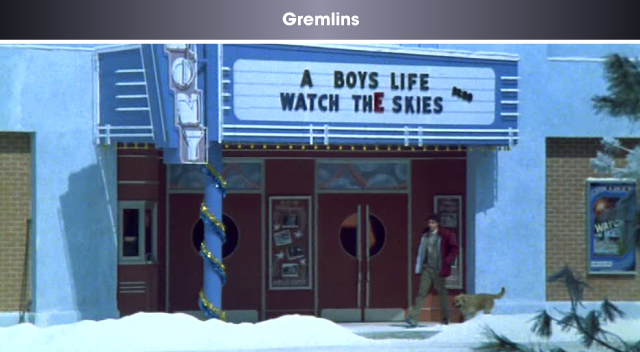 Back in the mid ’80s, when Steven Spielberg’s imprimatur was seemingly everywhere, this Joe Dante-directed creature comedy spawned numerous cinematic imitators (Ghoulies, anyone?), but also kept the sound of cash registers ringing across the country. Dante was not one to forget which side his bread was buttered on either, as he inserted a brief homage to Spielberg (who also produced the film) with the choice of booking at the local movie theater in the town of Kingston Falls. A quick glance at the marquee shows a double feature of A Boy’s Life — a working title for E.T. at one point — and Watch the Skies —one of the titles considered before Spielberg settled on Close Encounters of the Third Kind. Sorry, but no extra credit for also recognizing Skies as among the last lines of dialogue spoken in the 1951 version of The Thing. Geekdom has its limits.
Back in the mid ’80s, when Steven Spielberg’s imprimatur was seemingly everywhere, this Joe Dante-directed creature comedy spawned numerous cinematic imitators (Ghoulies, anyone?), but also kept the sound of cash registers ringing across the country. Dante was not one to forget which side his bread was buttered on either, as he inserted a brief homage to Spielberg (who also produced the film) with the choice of booking at the local movie theater in the town of Kingston Falls. A quick glance at the marquee shows a double feature of A Boy’s Life — a working title for E.T. at one point — and Watch the Skies —one of the titles considered before Spielberg settled on Close Encounters of the Third Kind. Sorry, but no extra credit for also recognizing Skies as among the last lines of dialogue spoken in the 1951 version of The Thing. Geekdom has its limits.
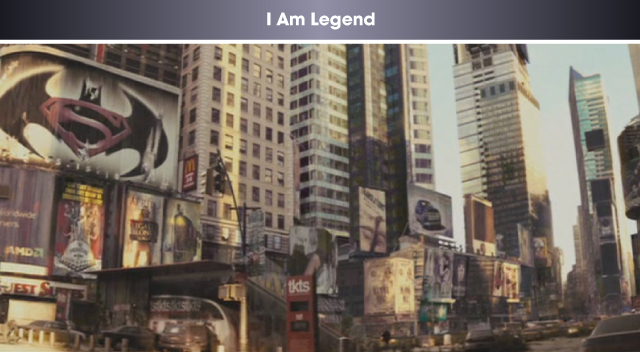 Never one to waste a good corporate synergy, this all-Warner Bros. reference flashes by for about ten seconds as Will Smith makes his way through the deserted streets of Manhattan with his loyal dog, Sam. Sure, the world has basically ended, but there are still remnants of what once was, which includes a billboard that incorporates the Batman shield with the Superman logo over it. This can be also be looked at as a not-too-gentle dig by Legend producer Akiva Goldsman, whose Batman vs. Superman script has been in development hell for years. Talk about biting the hand that feeds you.
Never one to waste a good corporate synergy, this all-Warner Bros. reference flashes by for about ten seconds as Will Smith makes his way through the deserted streets of Manhattan with his loyal dog, Sam. Sure, the world has basically ended, but there are still remnants of what once was, which includes a billboard that incorporates the Batman shield with the Superman logo over it. This can be also be looked at as a not-too-gentle dig by Legend producer Akiva Goldsman, whose Batman vs. Superman script has been in development hell for years. Talk about biting the hand that feeds you.
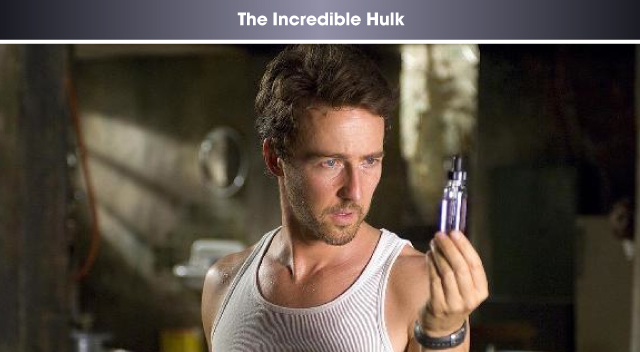 What list wouldn’t be complete without at least one mention of Marvel characters, so cross-pollinated is their comic universe. This reboot of Hulkamania starring Edward Norton might’ve yielded the same results as the Ang Lee version, but it did create a squabble that fanboys still bat back and forth like partisan politicians on Capitol Hill. The scene comes when the un-jolly green giant emerges from his cave, clearly agitated by the sudden lightning storm that has arisen. Look far off into the distance and you’ll see Thor fall to Earth. Or does he? Many believe so, and it certainly would lay the foundation for the animus the two characters would eventually hold against each other. Then again, most people have real lives and wouldn’t concern themselves with such issues.
What list wouldn’t be complete without at least one mention of Marvel characters, so cross-pollinated is their comic universe. This reboot of Hulkamania starring Edward Norton might’ve yielded the same results as the Ang Lee version, but it did create a squabble that fanboys still bat back and forth like partisan politicians on Capitol Hill. The scene comes when the un-jolly green giant emerges from his cave, clearly agitated by the sudden lightning storm that has arisen. Look far off into the distance and you’ll see Thor fall to Earth. Or does he? Many believe so, and it certainly would lay the foundation for the animus the two characters would eventually hold against each other. Then again, most people have real lives and wouldn’t concern themselves with such issues.
 There was a lot of talk about doppelgängers and other hifalutin scientific mumbo jumbo in this landmark sci-fi film, and one of the best examples was in the scene collectively known as “the woman in the red dress” scene. You’ll need repeated viewings to grasp what’s fully going on here, as Neo walks down a busy street listening to Morpheus opine. You’ll see countless twins, and even triplets, pass by, and might not even realize it. The truly amazing part is that they’re not CGI-created. The Wachowski Brothers (this was before Larry’s surgery) simply couldn’t afford it, so they found the real thing(s). As Keanu so eloquently put it, “Whoa.”
There was a lot of talk about doppelgängers and other hifalutin scientific mumbo jumbo in this landmark sci-fi film, and one of the best examples was in the scene collectively known as “the woman in the red dress” scene. You’ll need repeated viewings to grasp what’s fully going on here, as Neo walks down a busy street listening to Morpheus opine. You’ll see countless twins, and even triplets, pass by, and might not even realize it. The truly amazing part is that they’re not CGI-created. The Wachowski Brothers (this was before Larry’s surgery) simply couldn’t afford it, so they found the real thing(s). As Keanu so eloquently put it, “Whoa.”
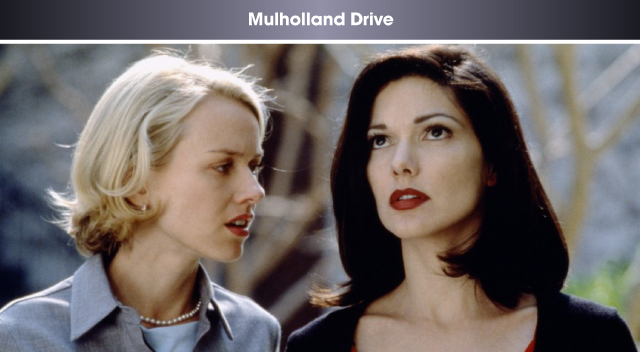 For over a decade people have been trying to decipher the puzzle box that is David Lynch’s Mulholland Drive. It’s one of the few films that should actually come with a syllabus, it’s that confounding. Lynch drops little clues along the way, but who would’ve figured him for a sly social commentator? In the scene where Naomi Watts and Laura Harring hail a cab on their way to Club Silencio, the camera slowly moves past a lamppost on the right. Plastered on the pole is a small white notice that succinctly reads “Hollywood Is Hell.” Need more be said?
For over a decade people have been trying to decipher the puzzle box that is David Lynch’s Mulholland Drive. It’s one of the few films that should actually come with a syllabus, it’s that confounding. Lynch drops little clues along the way, but who would’ve figured him for a sly social commentator? In the scene where Naomi Watts and Laura Harring hail a cab on their way to Club Silencio, the camera slowly moves past a lamppost on the right. Plastered on the pole is a small white notice that succinctly reads “Hollywood Is Hell.” Need more be said?
 For years the Coen Brothers have been the sharpest guys in the room, but only hardcore Coen fans are likely to pick up on the brief inside joke in this Best Picture winner of 2007. After Javier Bardem is wounded in the nighttime street shootout with Josh Brolin, he goes to a drugstore the next day in search of medicinal supplies to patch up his injuries. His apothecary of choice? Mike Zoss Pharmacy. In Coen lore (and real life) Mike Zoss Drug was a place of honor. Joel and Ethan, who grew up in St. Lous Park, Minnesota, frequented the Minnetonka Boulevard shop as kids and remembered it so fondly that they named their production company after the beloved proprietor. Talk about loyalty knowing no bounds, friendo.
For years the Coen Brothers have been the sharpest guys in the room, but only hardcore Coen fans are likely to pick up on the brief inside joke in this Best Picture winner of 2007. After Javier Bardem is wounded in the nighttime street shootout with Josh Brolin, he goes to a drugstore the next day in search of medicinal supplies to patch up his injuries. His apothecary of choice? Mike Zoss Pharmacy. In Coen lore (and real life) Mike Zoss Drug was a place of honor. Joel and Ethan, who grew up in St. Lous Park, Minnesota, frequented the Minnetonka Boulevard shop as kids and remembered it so fondly that they named their production company after the beloved proprietor. Talk about loyalty knowing no bounds, friendo.
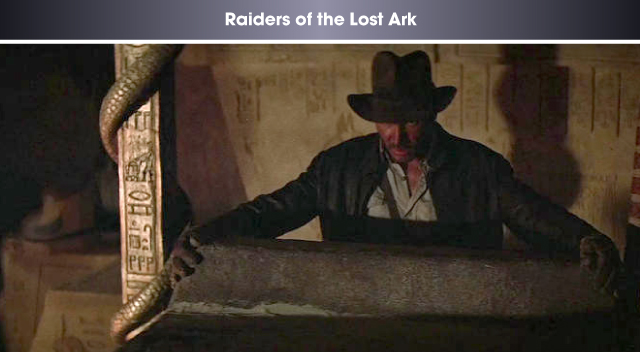 This Spielberg classic has one of the better-known in-jokes, but as the years have passed, it’s worth reminding a new generation of fans what to keep an eagle eye out for. In what is clearly a nod to Spielberg’s good buddy George Lucas, a cameo appearance by R2-D2 and C-3PO in hieroglyphics can be seen when Indiana Jones visits the Well of Souls, as well as the seaplane that spirits Indy away at the beginning, which bears the unlikely registration number “OB-CPO,” an obvious nod to Obi-Wan Kenobi and C-3PO again. Not exactly discreet, and by the time you get to Temple of Doom, where a place is named Club Obi-Wan, all pretense of subtlety has vanished. We. Get. It.
This Spielberg classic has one of the better-known in-jokes, but as the years have passed, it’s worth reminding a new generation of fans what to keep an eagle eye out for. In what is clearly a nod to Spielberg’s good buddy George Lucas, a cameo appearance by R2-D2 and C-3PO in hieroglyphics can be seen when Indiana Jones visits the Well of Souls, as well as the seaplane that spirits Indy away at the beginning, which bears the unlikely registration number “OB-CPO,” an obvious nod to Obi-Wan Kenobi and C-3PO again. Not exactly discreet, and by the time you get to Temple of Doom, where a place is named Club Obi-Wan, all pretense of subtlety has vanished. We. Get. It.
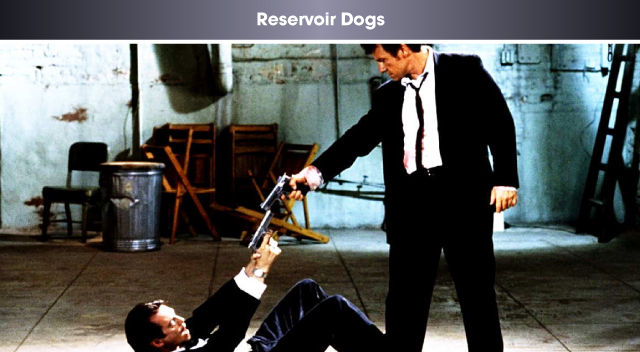 Quentin Tarantino is another director who loves to scatter inside references (and homages) in quick, pay-attention visuals throughout his films, something that started right at the beginning with this cult crime tale. If you want to know who the true mole is in the band of thieves, QT provides numerous opportunities, both through dialogue and shot compositions, like in the scene in which Mr. Pink and Mr. White are discussing the identity of the insider. A sharp-eyed viewer will notice how the bottles are stacked on the counter behind them; this is preceded by a scene in the warehouse where two shirts and a rag on the floor also give a lean to what’s going on.
Quentin Tarantino is another director who loves to scatter inside references (and homages) in quick, pay-attention visuals throughout his films, something that started right at the beginning with this cult crime tale. If you want to know who the true mole is in the band of thieves, QT provides numerous opportunities, both through dialogue and shot compositions, like in the scene in which Mr. Pink and Mr. White are discussing the identity of the insider. A sharp-eyed viewer will notice how the bottles are stacked on the counter behind them; this is preceded by a scene in the warehouse where two shirts and a rag on the floor also give a lean to what’s going on.
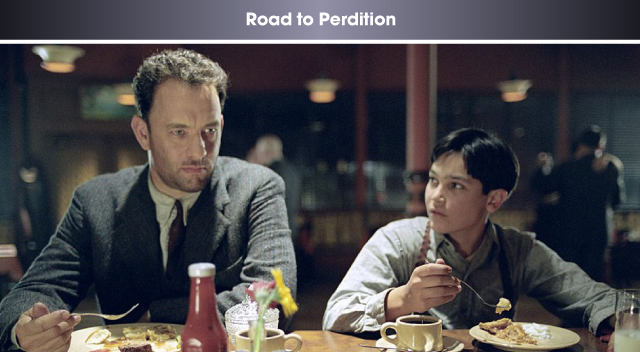 What is it about Tom Hanks and angels? They were seemingly intertwined in this period gangster saga in which he played Mike Sullivan, a mob enforcer known as “the Angel of Death,” which, of course, is light years better than the awful Angels and Demons he would later do — but that’s a carpfest for another day. The connection here even extended to Sullivan’s family, in an intriguing bit of visual symbolism where father and son take off on the run from a vicious Paul Newman, who wants them dead. As they drive away on a wintry night, a close look at the frosted back window faintly reveals the figure of an angel on the glass perched over the son’s left shoulder. The way bodies pile up in Perdition, if anyone ever needed a little extra help, it’s this kid.
What is it about Tom Hanks and angels? They were seemingly intertwined in this period gangster saga in which he played Mike Sullivan, a mob enforcer known as “the Angel of Death,” which, of course, is light years better than the awful Angels and Demons he would later do — but that’s a carpfest for another day. The connection here even extended to Sullivan’s family, in an intriguing bit of visual symbolism where father and son take off on the run from a vicious Paul Newman, who wants them dead. As they drive away on a wintry night, a close look at the frosted back window faintly reveals the figure of an angel on the glass perched over the son’s left shoulder. The way bodies pile up in Perdition, if anyone ever needed a little extra help, it’s this kid.
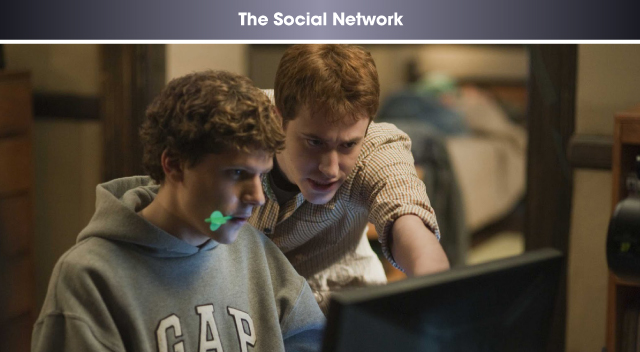 It’s not the densely layered, visual lollapalooza that Fight Club was, but David Fincher managed to bring a taste of that film’s anarchic spirit to this Aaron Sorkin-scripted story about the origins of Facebook. While in the nascent stages of developing the social media behemoth, Mark Zuckerberg (Jesse Eisenberg) creates a dummy alias while cheating on an exam. Upon closer inspection of Zuckerberg’s computer screen, the bogus name he’s created? Tyler Durden. Great characters never die, they just get recycled.
It’s not the densely layered, visual lollapalooza that Fight Club was, but David Fincher managed to bring a taste of that film’s anarchic spirit to this Aaron Sorkin-scripted story about the origins of Facebook. While in the nascent stages of developing the social media behemoth, Mark Zuckerberg (Jesse Eisenberg) creates a dummy alias while cheating on an exam. Upon closer inspection of Zuckerberg’s computer screen, the bogus name he’s created? Tyler Durden. Great characters never die, they just get recycled.
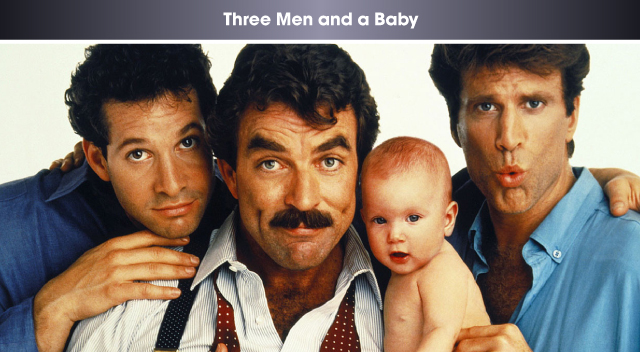 Probably the creepiest of all films listed here (both literally and figuratively). Urban legends have sprung up around a scene in an apartment between Ted Danson and Olympia Dukakis where, as they pass by a window, the figure of a young boy can be seen fleetingly in the background. Conspiracy theorists claim that a young boy had died in the apartment and his ghost somehow showed up in the footage; the more pragmatic say it’s the cardboard cutout of a boy that was used in another scene, but somehow found its way into the shot. Decide for yourself, but it makes for great discussion, and is certainly more interesting than anything going on in the film.
Probably the creepiest of all films listed here (both literally and figuratively). Urban legends have sprung up around a scene in an apartment between Ted Danson and Olympia Dukakis where, as they pass by a window, the figure of a young boy can be seen fleetingly in the background. Conspiracy theorists claim that a young boy had died in the apartment and his ghost somehow showed up in the footage; the more pragmatic say it’s the cardboard cutout of a boy that was used in another scene, but somehow found its way into the shot. Decide for yourself, but it makes for great discussion, and is certainly more interesting than anything going on in the film.
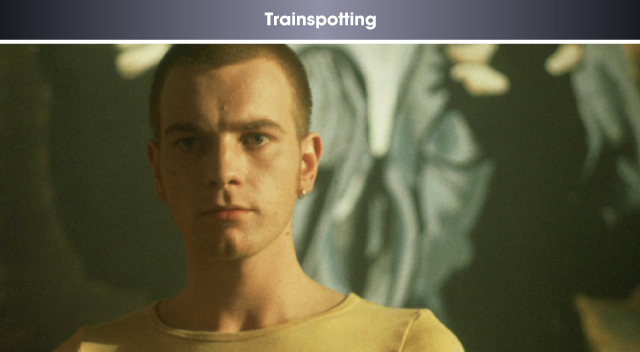 In generation after generation, directors have worn their influences on their sleeves — except, of course, Brian DePalma, who wore his Hitchcock fixation more like a straightjacket. Danny Boyle was certainly no exception, as he clearly paid tribute to two cinematic gods in this superb adaptation of the Irvine Welsh bestseller about a group of Edinburgh junkies. As Ewan McGregor peruses the available female talent in the Volcano Club, he stands in front of a giant mural of Travis Bickle from Scorsese’s Taxi Driver (not to mention one of Jodie Foster that adorns the loo), while the walls of the club are decked out with the same wording (and font) used by Kubrick in the Korova Milk Bar in A Clockwork Orange. Viddy well, little brother, viddy well.
In generation after generation, directors have worn their influences on their sleeves — except, of course, Brian DePalma, who wore his Hitchcock fixation more like a straightjacket. Danny Boyle was certainly no exception, as he clearly paid tribute to two cinematic gods in this superb adaptation of the Irvine Welsh bestseller about a group of Edinburgh junkies. As Ewan McGregor peruses the available female talent in the Volcano Club, he stands in front of a giant mural of Travis Bickle from Scorsese’s Taxi Driver (not to mention one of Jodie Foster that adorns the loo), while the walls of the club are decked out with the same wording (and font) used by Kubrick in the Korova Milk Bar in A Clockwork Orange. Viddy well, little brother, viddy well.
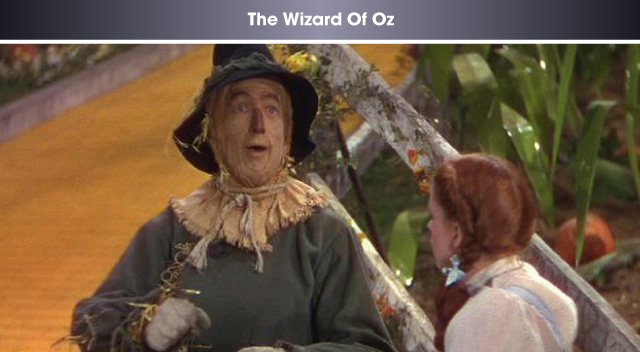 And what better way to wrap up than with one of the greatest WTF shots in history! This has been debated for decades, will most likely never be settled, and to even judge it properly, you need to do some research that requires multiple copies of the MGM classic. The scene that has created such controversy through the years comes after the Wicked Witch tries to set fire to the Scarecrow. Once Dorothy and the Tin Woodsman put him out, they’re back on the Yellow Brick Road to Oz! But wait a sec, what’s that lurking in the far background just after the Scarecrow slips? According to Wizard lore, it’s a technician (or Munchkin) who hanged himself, but in newer versions, it’s pretty obvious that it’s a large bird opening its wings. One problem: the bird was inserted in newer copies of the film. Why? No one is saying. Get hold of an old VHS of the movie, and you’ll see a very different image. Let the argument rage on!
And what better way to wrap up than with one of the greatest WTF shots in history! This has been debated for decades, will most likely never be settled, and to even judge it properly, you need to do some research that requires multiple copies of the MGM classic. The scene that has created such controversy through the years comes after the Wicked Witch tries to set fire to the Scarecrow. Once Dorothy and the Tin Woodsman put him out, they’re back on the Yellow Brick Road to Oz! But wait a sec, what’s that lurking in the far background just after the Scarecrow slips? According to Wizard lore, it’s a technician (or Munchkin) who hanged himself, but in newer versions, it’s pretty obvious that it’s a large bird opening its wings. One problem: the bird was inserted in newer copies of the film. Why? No one is saying. Get hold of an old VHS of the movie, and you’ll see a very different image. Let the argument rage on!
